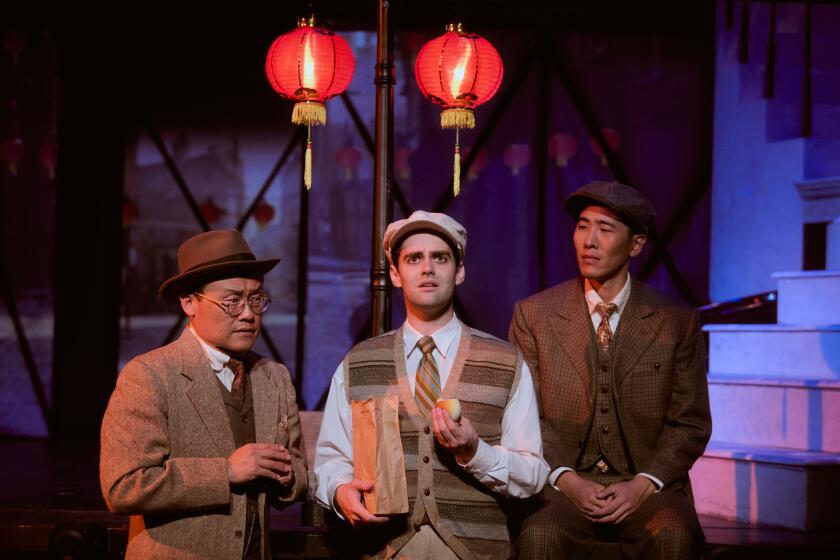Review: Walter De Maria’s ‘2000 Sculpture’ a fine fit at LACMA
When Walter De Maria considers how large a sculpture should be, a frequent answer is: 1 kilometer long.
That’s a dimension of “The Lightning Field” (1977), a grid of 400 stainless steel posts 1-mile wide and 1-kilometer long, arranged in the New Mexico desert. It’s the length of “Vertical Earth Kilometer” (1977) and “The Broken Kilometer” (1979), two sculptures formed from long brass rods -- one sunken into the ground, the other broken up into pieces and laid out in rows. And, if all 2,000 white-plaster rods in “The 2000 Sculpture” (1992) were laid end-to-end, the resulting line would stretch for 1 kilometer too.
PHOTOS: Arts and culture in pictures
“The 2000 Sculpture” is on view for an extended duration (through April 1) in the Resnick Pavilion’s center gallery at the Los Angeles County Museum of Art. In a sprawling, difficult-to-install space that has proved to be inhospitable for a lot of art, the work -- on loan from the W. Bechtler Foundation in Switzerland -- looks terrific. Its size requires what the Resnick has: a light-filled expanse of empty space.
The standardized length removes individual taste or whim from the artistic equation. So does the mathematical arrangement, with rods set out on the floor equidistant from one another to form a herringbone pattern. A strictly ordered system is a hallmark of Minimal sculpture, which the Bay Area-born, New York-based artist helped to pioneer in the 1960s.
The ground-hugging sculpture’s height is less than 5 inches, while the white rods come in three polygon shapes: five-, seven- and nine-sided. The selection of shapes, 20 pieces wide and 100 pieces long, forms a pattern across its width: 5,7,9,7,5, which then repeats as 5,7,9,7,5. The repetition suggests a sculpture that could expand into infinity.
What’s remarkable is how it becomes the engine for a perceptual reverie best described as secular but spiritual. Too large to take in without moving around the room, the sculpture keeps falling in and out of visual coherence.
Your mind knows what’s up, but your eyes keep shifting your bodily relationship to the sculpture and its ever-changing parts. Part-to-whole keeps splintering and reconvening, but in a manner that is oddly serene and assuasive. The physical interaction triggers a contemplative response.
De Maria’s work hews toward industrialized production methods, machine-related design motifs and structural processes. But those logical, acutely rational elements are put to marvelously illogical and non-rational ends. “The 2000 Sculpture” is a kind of modern flying carpet in which art, not science, operates at the most profound level of liberation.
LACMA, 5905 Wilshire Blvd., (323) 857-6000, through April 1. Closed Weds. www.lacma.org
More to Read
The biggest entertainment stories
Get our big stories about Hollywood, film, television, music, arts, culture and more right in your inbox as soon as they publish.
You may occasionally receive promotional content from the Los Angeles Times.

![LOS ANGELES, CA - JUNE 17: [Cody Ma and Misha Sesar share a few dishes from their Persian Restaurant Azizam] on Monday, June 17, 2024 in Los Angeles, CA. (Ethan Benavidez / For The Times)](https://ca-times.brightspotcdn.com/dims4/default/7ffc7f6/2147483647/strip/true/crop/5110x3417+306+0/resize/320x214!/quality/75/?url=https%3A%2F%2Fcalifornia-times-brightspot.s3.amazonaws.com%2F79%2Fdc%2F4d29255545f5b9813315901692bc%2F1459972-fo-azizam-review20-eba.JPG)





